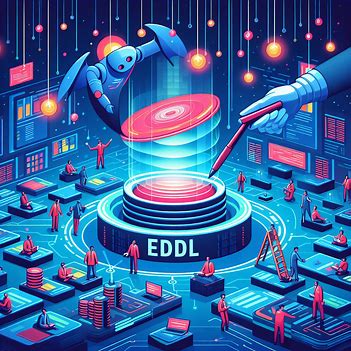The Event-Driven Data Layer (EDDL)

In the digital world, data is the key to understanding customer behavior and improving user experience. Two important concepts in this realm are the Customer Experience Digital Data Layer (CEDDL) and the Event-Driven Data Layer (EDDL).
Understanding CEDDL and EDDL
CEDDL is a legacy W3C standard that has been widely used in the industry. It provides a framework for standardizing the collection and distribution of digital marketing data on web pages.
On the other hand, EDDL represents the future of data layers. It is an “event-driven, asynchronous data layer.” Constructed as a JavaScript array, it accepts new values as data becomes available. The beauty of EDDL lies in its simplicity and consistent code pattern.
How EDDL Works
Page Data: To start, we pass in data related to the web page. Here’s an example of the code you’d provide to developers:
adobeDataLayer.push({
"event": "page-view",
"page": {
"pageName": "My EDDL Blog",
"pageCategory": "Blogs",
"pageURL": "www.abc.com.au/blogs"
}
});This JSON object resembles a traditional data layer structure. Developers would execute this code on page load.
Non-Pageview Events: The EDDL’s versatility shines here. The same code pattern works for various events. Let’s consider tracking link clicks through the data layer:
adobeDataLayer.push({
"event": "CTA Click",
"data": {
"linkName": "[link name]"
}
});Again, developers would implement this code when a successful link click occurs.
Considerations for CEDDL
While CEDDL has been a reliable standard for many years, it does have some limitations. It is not as flexible or dynamic as EDDL, and it can be more complex to implement and maintain. Furthermore, as technology evolves, newer standards like EDDL are becoming more prevalent and are likely to be more compatible with future technologies.
Benefits of EDDL
Simplicity and Robustness:
- EDDL minimizes code complexity. Once you set it up, there’s no need for constant adjustments.
- Unlike other data layer methodologies, EDDL proactively sends messages when events happen, eliminating timing issues.
Tool-Agnostic Approach:
- EDDL abstracts the tool from the data. Whether you load Adobe Analytics pageview code on window load or a click event, EDDL remains independent of tool-specific definitions.
Integrating Adobe Data Collection with EDDL
Adobe Data Collection & ACDL Manager Extension
Now, let’s configure Adobe Data Collection to collect and pass this data to Adobe Analytics using the Adobe Client Data Layer (ACDL) Manager extension.
Brief note about Adobe Client Data Layer — Although a type of EDDL, it’s designed to manage data within Adobe Experience Manager (AEM) implementations. However, working with AEM and ACDL can get quite complex and confusing.
As mentioned earlier, EDDL aims for simplicity and works with ACDL manager extension in Adobe Data Collection.
A Typical Configuration
Here’s an example of how EDDL and the ACDL Manager extension work together in Adobe Data Collection:



In summary, the Event-Driven Data Layer simplifies implementation, reduces maintenance, and ensures consistent data transmission.
Feel free to explore the power of EDDL and enhance your data-driven strategies!
